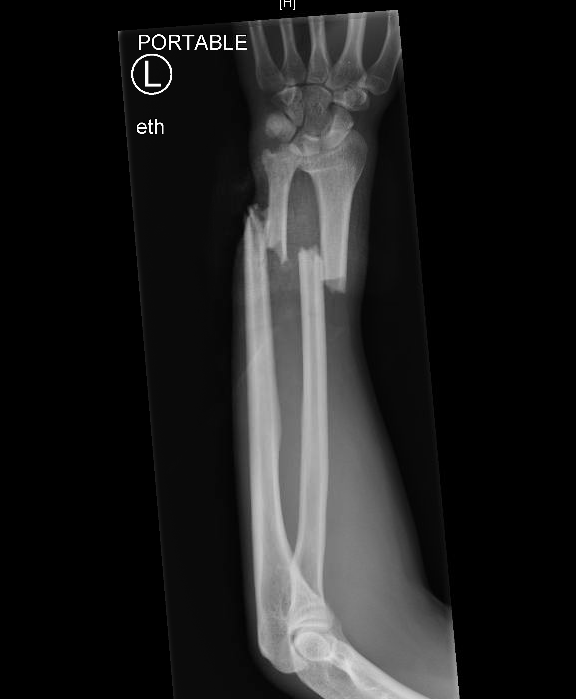Soft Tissue Case 9 ED Management
Once an open fracture is identified, the key steps in management are stabilization, irrigation, debridement, and antibiotic administration. Update tetanus status as warranted.
For irrigation within the Emergency Department, the FLOW trial advocates that low pressure irrigation (1-2psi) with saline is an acceptable method for wound irrigation [2]. Variable irrigation pressure levels (1-2psi, 5-10psi, >20psi) and types of irrigation solution (soap versus saline) were compared. There was no difference in reoperation rate between the different pressure levels. However saline irrigation had a statistically significant lower reoperation rate compared to soap.
All open fractures must promptly receive a first-generation cephalosporin. If the patient is allergic to cephalosporins, ciprofloxacin may be used. If the wound is >10cm with loss of bone coverage and severe soft tissue injury, an aminoglycoside should be added to cover for gram-negative organisms. Significant contamination of the wound, either by dirt, soil, gravel, or any other outside material warrants additional anaerobic coverage (specifically clostridium perfringens) with a penicillin (other options include metronidazole or clindamycin if PCN allergic) [1].
Orthopedic surgery must be consulted as these wounds will need operative irrigation and debridement. Previous dogma suggested that patients needed operative irrigation and debridement within six hours of injury, however recent evidence suggests that there is no difference in infection rate and time to operative intervention (less than six hours versus more than seven hours) as long as IV antibiotics were administered as quickly as possible [3].
